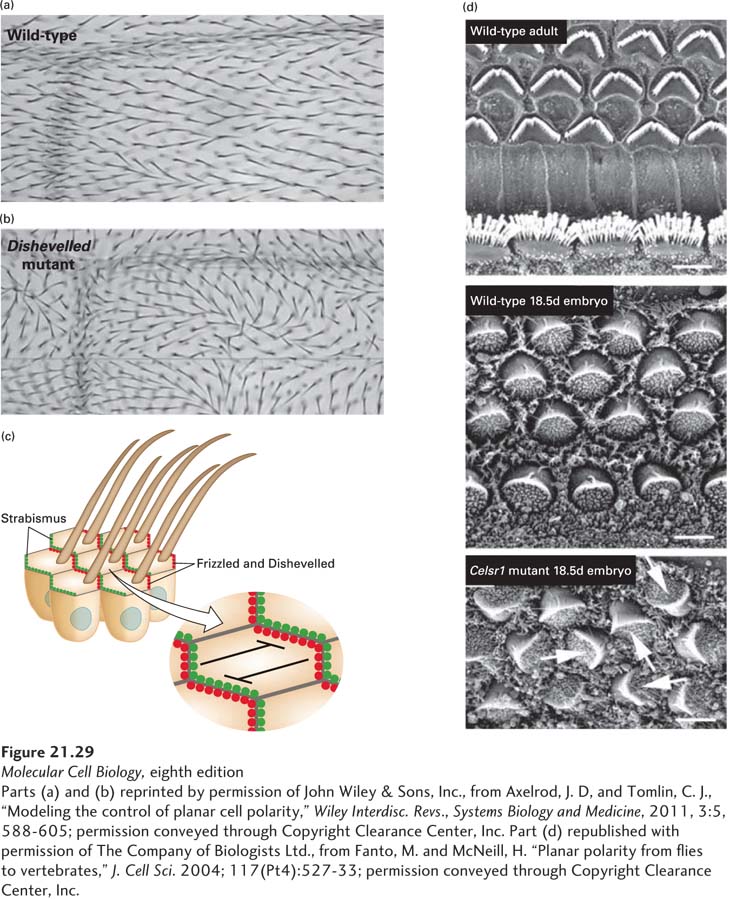
EXPERIMENTAL FIGURE 21- 29 Planar- cell polarity (PCP) determines the orientation of cells. (a) The hairs on each cell of the fly wing all point in the same direction in a wild- type fly. (b) In a fly defective in PCP, as shown in this Dishevelled mutant, the orientation of the hairs becomes disorganized, although the cells in the epithelium are still well organized. (c) The directionality of the hair is determined by the asymmetric localization of components of the PCP pathway, as indicated for Frizzled, Dishevelled, and Strabismus, all of which are needed for orienting the hair appropriately. Planar cell polarity is propagated across a tissue due to two mechanisms. First, Frizzled on one cell binds to Strabismus on the adjacent cell. Second, within each cell, the distribution of Frizzled and Strabismus is mutually exclusive due to their antagonism. (d) The sensory hair cells of the vertebrate inner ear have V- shaped arrangements of stereocilia on their surface. In the adult and 18.5- day embryo (top and center images), all the cells are oriented in precisely the same way. In a mouse Celsr1 mutant (the vertebrate homolog of Flamingo) defective in PCP, the cells in the 18.5- day embryo appear normal, but their relative orientations are disrupted (arrows in bottom panel).
[Parts (a) and (b) reprinted by permission of John Wiley & Sons, Inc., from Axelrod, J. D, and Tomlin, C. J., “Modeling the control of planar cell polarity,” Wiley Interdisc. Revs., Systems Biology and Medicine, 2011, 3:5, 588- 605; permission conveyed through Copyright Clearance Center, Inc. Part (d) republished with permission of The Company of Biologists Ltd., from Fanto, M. and McNeill, H. “Planar polarity from flies to vertebrates,” J. Cell Sci. 2004; 117(Pt4):527- 33; permission conveyed through Copyright Clearance Center, Inc.]
[Leave] [Close]